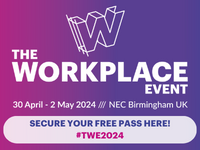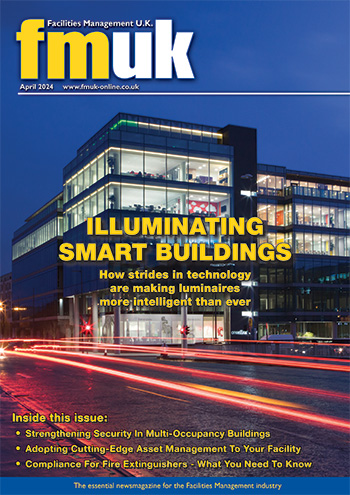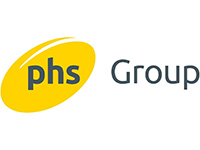Employee Health And Wellbeing: Considerations For The Future Workspace
 By Mike Hook, Executive Director at LMG
By Mike Hook, Executive Director at LMG
Few considerations have shifted up the workspace agenda as quickly as employee health and wellbeing in recent months. A fact which, in light of the events of 2020, makes perfect sense.
Having to deal with a pandemic and its consequences has dominated business decisions and may continue to do so for some time. It has drawn attention to the issue of employee health and wellbeing, permanently. People are working from a variety of different locations, in extremely varied conditions. Some may be fortunate enough to enjoy the comforts of a home office, but many will be working from kitchen tables. As employees eventually return to the communal workspace, corporate real estate decision makers will have to make an assessment on whether their spaces remain fit for purpose.
Our latest research into attitudes around corporate real estate strategy found that nearly a third (32%) of industry leaders would like to make gains in employee wellbeing; while more than half (61%) say that the combination of Covid-19 and the health and safety of their employees is forcing them to reconsider the strategic value of the workspace, and its business role.
These industry leaders want to future-proof their workspaces against health-related disruption by being proactive with their real estate. It’s this future-proofing that sits at the forefront of the minds of facilities professionals, COOs and developers, as we collectively take advantage of this opportunity to build back with greater resilience.
Greater Flexibility
Expectations are changing for all office-dwellers. When we asked industry leaders how strongly they agree with the statement ‘we expect less employees to work in the office due to health and wellbeing concerns’ — the average score was 8/10. So, while almost three quarters (73%) said that health and wellbeing has moved up their agenda, the solutions they will be implementing seem to be more focused on having fewer people in the office at once, as opposed to upgrading the office space itself.
Over the previous year, remote working was forced upon many — sparking a rethink of the notion that teams must be physically together in the same space in order to be productive and successful. Happy employees have an appreciation for choice and flexibility, and employers are becoming aware of that. The tools are becoming widely available to facilitate this without any disadvantage to the business.
Distributed working practices that aren’t reliant on mass office occupation is a cornerstone of a more flexible, resilient real estate strategy.
Greater Connectivity
If flexibility is to be achieved properly and consistently, then connectivity is essential. The modern workspace requires a reliable unified communications (UC) platform. This is demonstrated in our research as, on average, industry leaders scored UC platforms 8/10 in terms of their importance. The same rankings are given for Mobile/Wi-Fi connectivity and intelligent Access Control systems. Evidently, the chief concern is keeping teams online, secure and communicating.
While only scoring an average of 5/10 in terms of importance, many of our survey respondents told us they are increasingly using space and occupancy control features, like desk booking ‘hot seat’ systems and company apps. This approach can allow for designers to make more informed decisions when building workspaces, thanks to the data that can be collected. These tools are becoming fundamental to a real estate strategy that places employee health and wellbeing at its centre.
Greater Convergence
It’s easy to treat flexible working practices and connectivity as a cure-all for achieving greater employee health and wellbeing, but it is in fact only the first step for businesses. The next step is making tangible, system-wide changes: converged, smart building solutions encompassing everything from remote work facilitation to managing/maximising office space. These solutions are readily available.
The goal is to create an employee experience that is compelling, in a personal, digital environment of bespoke elements grounded in real-time user data — improving the safety, security and wellbeing of each employee. We get there by providing engaging collaboration spaces on site, but also by upgrading the technology that allows people to connect from anywhere freely. This is a converged approach to infrastructure: technology and flexible operations brought together.
Greater Opportunity
Of course, much of the future remains unclear. What is certain is that we have the know-how, the technology and crucially, the opportunity, to radically remake the workspace. The top priority of workspace design really can be employee health and wellbeing, as operations are streamlined, and benefits are reaped across businesses in every sector. In spite of, and perhaps because of the challenges we’re faced with — now is the moment to take hold of the opportunity ahead.
Click the article to enlarge it.


























































